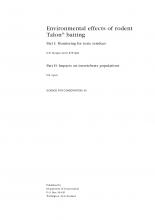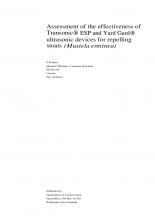Control of a stoat population irruption to enhance yellowhead breeding success / by ColinF.J. O'Donnell, Peter J.Dilks and Graeme P. Elliot

BRB
The mohua or yellowhead (Mohoua ochrocephala) is an endangered, hole-nesting forest bird endemic to New Zealand. Mohua suffer periodic population crashes due to severe predation by the introduced stoat (Mustela erminea). In 1990, a stoat population irruption provided an opportunity to reassess the impact of stoat predation on mohua and to test two linked hypotheses: that adaquate control of stoats by trapping is possible, and that it is a viable management option to assist mohua recovery. The primary experiment (summer 1990/91) was repeated in the summers of 1991/92 and 1992/93 when stoat numbers were lower. Mohua productivity and adult female mortality were compared in two study areas, one trapped and one untrapped, in the Eglinton Valley, Fiordland. Sixty-two stoats were caught in the 50 ha trapped area during summer 1990/91. The fledging of many first clutches, and the laying of second clutches, coincided closely with the period when high numbers of stoats were being caught in traps. Eighty percent of the nests in the trapped area fledged young, compared with only 36% in the untrapped area. Pairs produced nearly twice as many young in the trapped area. A higher proportion of breeding females disappeared from the untrapped area. In the two subsequent summers, 29 and 14 stoats were caught, and breeding success was higher than previously recorded in both trapped and untrapped areas. We suggest that trapping in the year following a stoat irruption may also be warranted.



